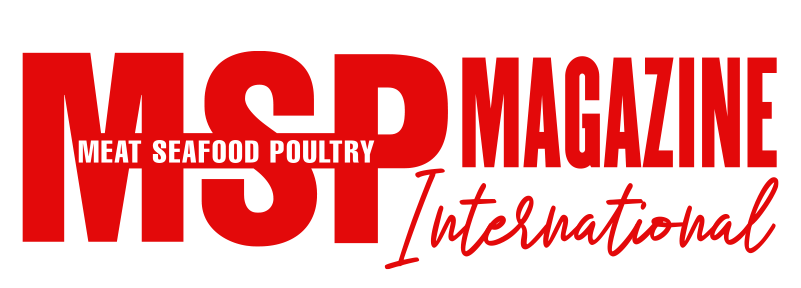Combining an eye-catching presentation with less use of plastics: FlatMap®, the latest packaging solution for sliced products, has recently won the prestigious Swiss Packaging Award 2021 within the category “Convenience”. In terms of quality and innovation, the Swiss food industry is one of the world’s most demanding markets, making this achievement even more significant!
Many innovations start in Switzerland before becoming mainstream in the packaging industry worldwide. The award-winning FlatMap® packaging system was developed by tray-sealing and thermoforming specialist SEALPAC, together with its Swiss customer Bigler AG. Other close partners in the project were Van Genechten Packaging, the cardboard expert located in Kempten (Germany), and Buergofol GmbH, leading film manufacturer located in Siegburg (Germany). The resource-saving FlatMap® solution relies on a high proportion of renewable raw materials, but also offers plenty of space for communication. Its striking and innovative look guarantees maximum attention of food products at retail.
Securely and attractively packaged under MAP
The new FlatMap® packaging system puts sliced meat, dairy and seafood products in the spotlights. These products are placed on a flat cardboard carrier made from bleached or unbleached fibre. The carrier is coated with a thin protective layer, which provides stability, as well as a reliable barrier against fat, moisture and oxygen. The products are securely sealed under modified atmosphere by means of a thin lidding film, hence prolonging their shelf life. Both the protective layer and lidding film are polyolefin-based, making them fully recyclable. Consumer-friendly opening of the pack is made possible by an easy-to-grip peel tab.
Due to the perfectly flat design of the pack, an entirely new level of reclosability can be achieved. As such, FlatMap® guarantees optimal freshness until the very last slice and enables first-class storage in the consumer’s refrigerator, without the need for repacking. The system is available on all of SEALPAC’s Amax-series traysealers with servo drive and FlatMap® preparation. This ensures a reliable sealing process under modified atmosphere.
Resource-saving
FlatMap® provides exceptional opportunities with regard to branding and product information. The cardboard carrier can be printed in high quality on both sides, therefore offering plenty of space for product explanations and consumer communication. Owing to its striking look, the packaging will always be a true eye-catcher on the retail shelves, regardless of whether its presentation is vertical or horizontal. In addition, the system offers even more convenience to the consumer: supported by an attractive design, sliced meat, cheese or seafood products are ready to serve from their packaging.
Another major benefit of the FlatMap® system is the resource-saving use of materials. Compared to common modified atmosphere packaging, up to 75% of plastic can be saved. At the same time, recycling is improved. After finishing the product, the thin layer is easily removed from the cardboard carrier by means of a peel tab, to allow for disposal as plastic waste together with the lidding film. Obviously, the cardboard carrier is thrown away separately as paper waste.
Equal convenience – even with renewable raw materials
The Swiss Packaging Institute (SVI) honours outstanding achievements in the packaging industry with its Swiss Packaging Award annually. The jury’s explanation for awarding FlatMap® in the “Convenience” category states: “In more and more packaging, the proportion of non-renewable raw materials is being reduced and replaced by renewable raw materials. The challenge here is to maintain the original functionality. In the opinion of the jury, the new FlatMap® system solves this challenge convincingly. The hybrid pack made of cardboard and plastic offers a strong performance in terms of opening and reclosing compared to pure plastic solutions. In addition, the separate disposal of the two components is solved in an exemplary manner.”

